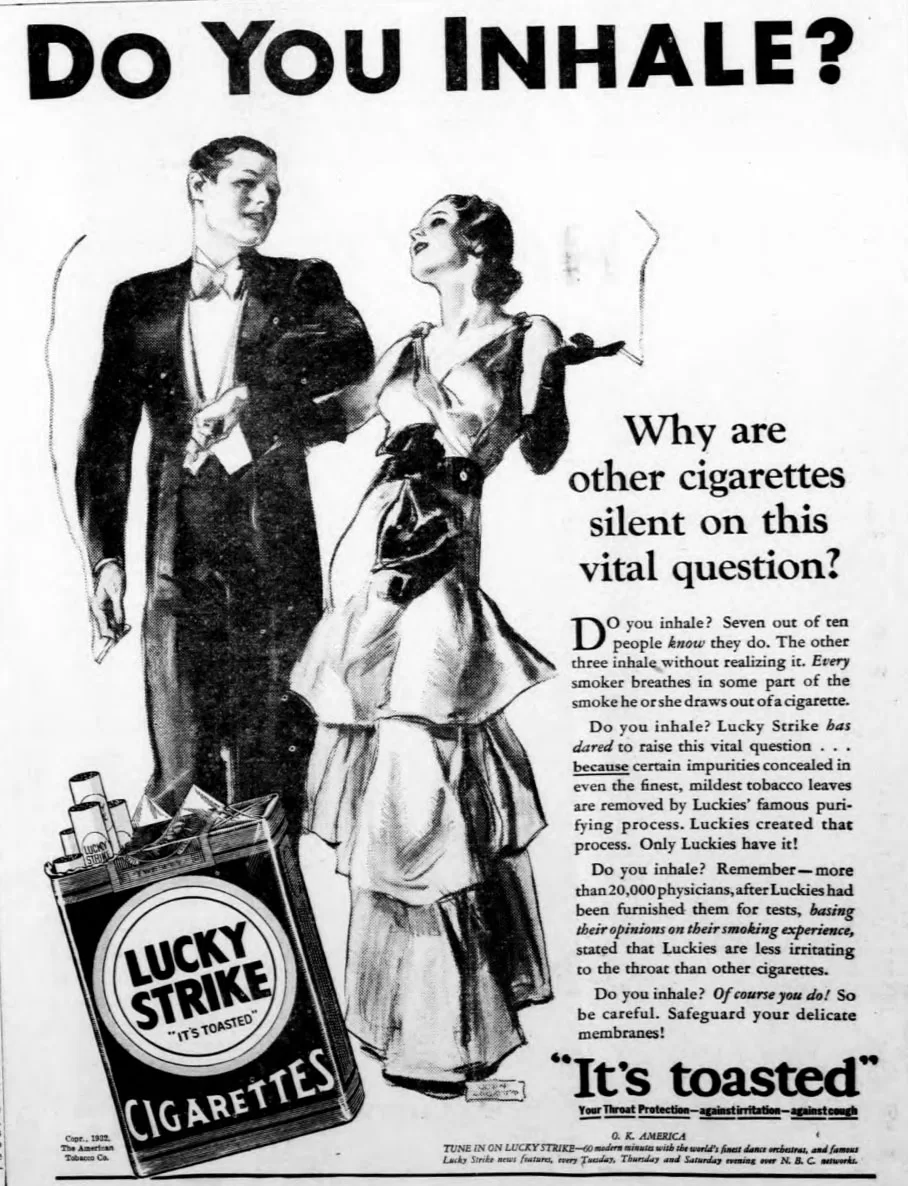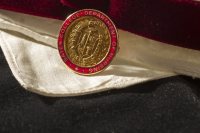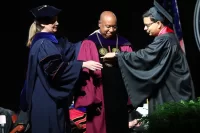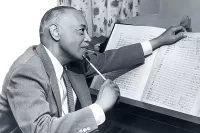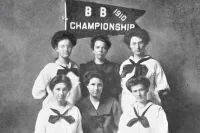
Here’s another selection of items that tell stories about Bates’ past from the Muskie Archives and Special Collections and elsewhere.
A Nice Run
This vintage trophy honors the three straight Maine state titles, 1968 through 1970, won by Walt Slovenski’s cross country runners.
Wait, vintage? Not so fast.
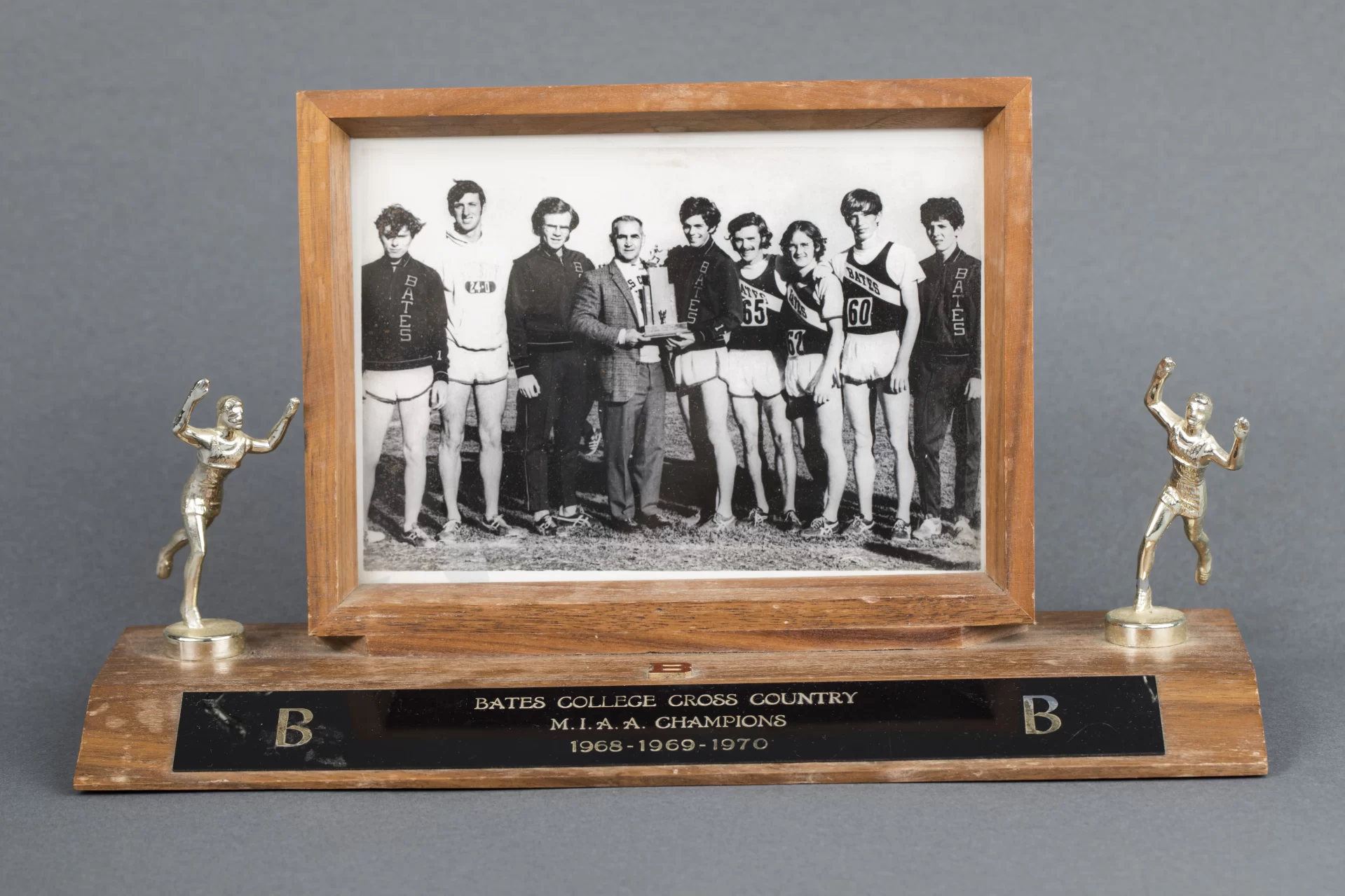
Three of the runners in that photo — Joe Grube ’73 (left), Jim Leahey ’71 (No. 65), and Joe Bradford ’73 (second from right) — just returned to campus for the 50th Cross Country Alumni Race. So, too, did the alumnus who took the photo, Joe Gromelski ’74.
Others in the photo also have returned regularly for the alumni race ever since it got started in 1972.
Before the start of the 50th anniversary edition, on Sept. 3, Leahy proudly displayed a photo of the first group of alumni and students who took part in the first alumni race.
Among that group, Bradford, Grube, Leahy, and Mortimer, as well as Gromelski, came back for the 50th. Among the race founders, Bradford had the best time for the six-kilometer course, 31:48.
As Leahy told Bates Athletics, he’s “probably more dedicated now in terms of running than I have ever been in my life; I’m grateful for the times we all have.”
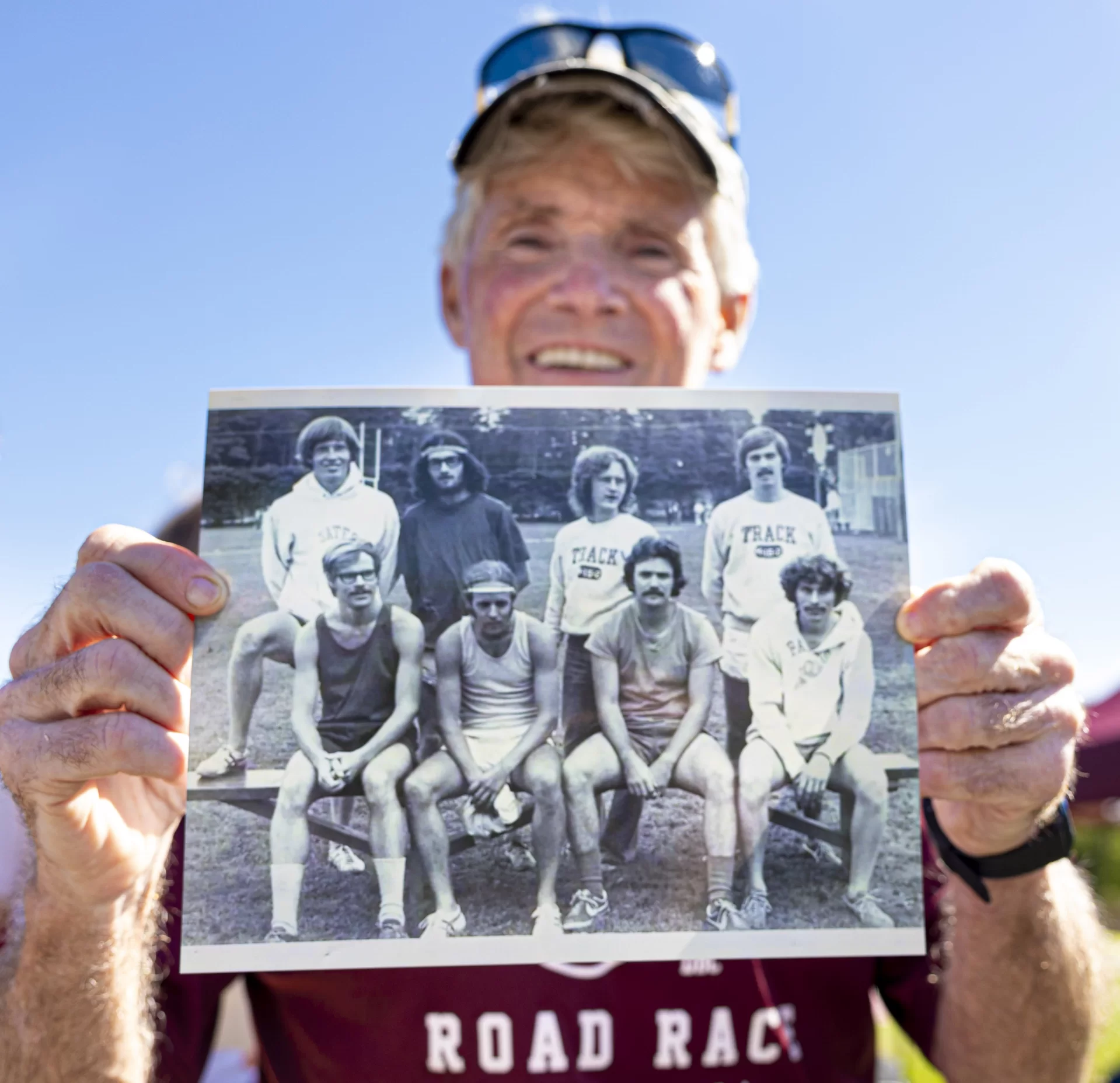
Star Bright
At the opening of the college 70 years ago, the College Club presented this Service Flag to Bates. It was installed in the Chapel and hung there throughout World War II.
Speaking at the first chapel service of the year, on Sept. 24, 1942, President Clifton Daggett Gray described the war outlook as “grim.” But, he said, “It is our privilege to march forward toward an unknown future unafraid, with the invincible faith in the justice of our cause and with unshakeable confidence in ultimate victory.”
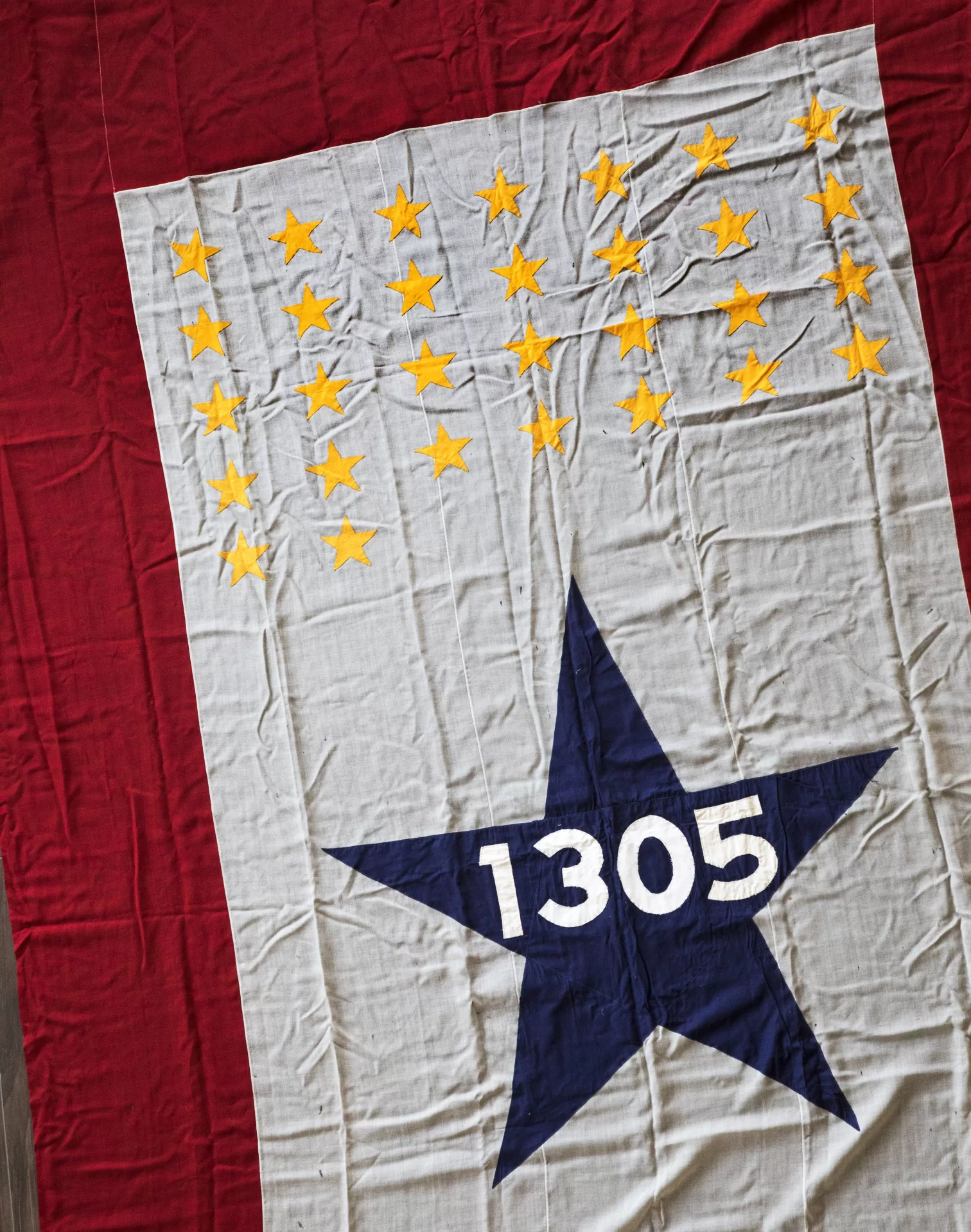
By war’s end the flag displayed 30 gold stars, symbolizing Bates students or alumni killed in the war. The number 1,305 represents the total who served.
Quimby’s Key
In 1964, legendary debate coach Brooks Quimby, Class of 1918, earned a distinguished alumni award — and this key — from the collegiate debating honor society Delta Sigma Rho–Tau Kappa Alpha.
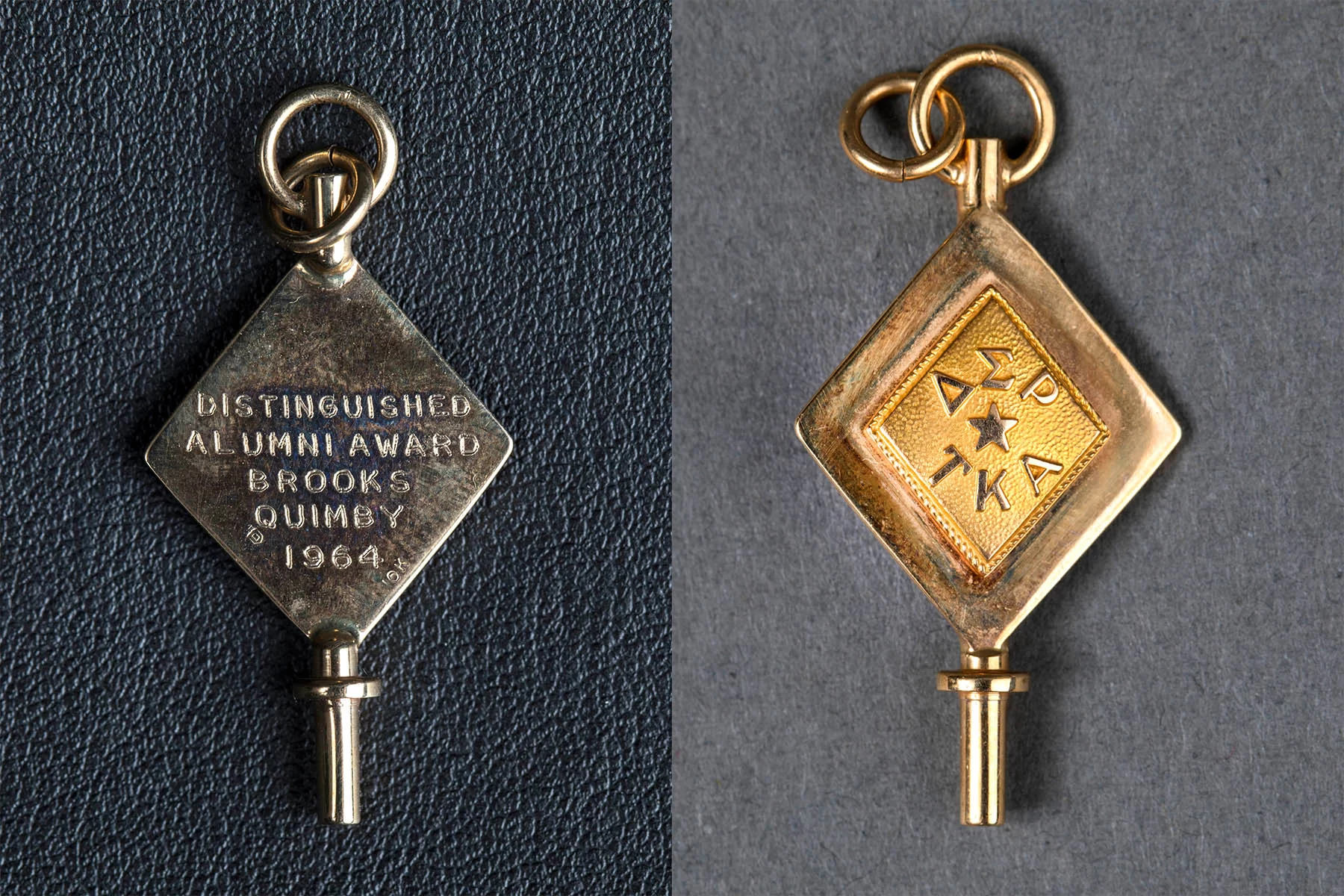
As a student, Quimby was a member of the Bates chapter Delta Sigma Rho (which merged with Tau Kappa Alpha in 1963).
At the national level, DSR was problematic: It prohibited Black debaters from becoming members of local chapters, including Bates’. The college fought the rule, while also benefiting from membership.
Sporting Interest
This Women’s Athletic Association key belonged to Virginia LaFauci Toner ’53.
The WAA was formed in 1905 to offer organized physical education to Bates women for the first time. Among the group’s first activities was a “hare and hound chase” for the women.
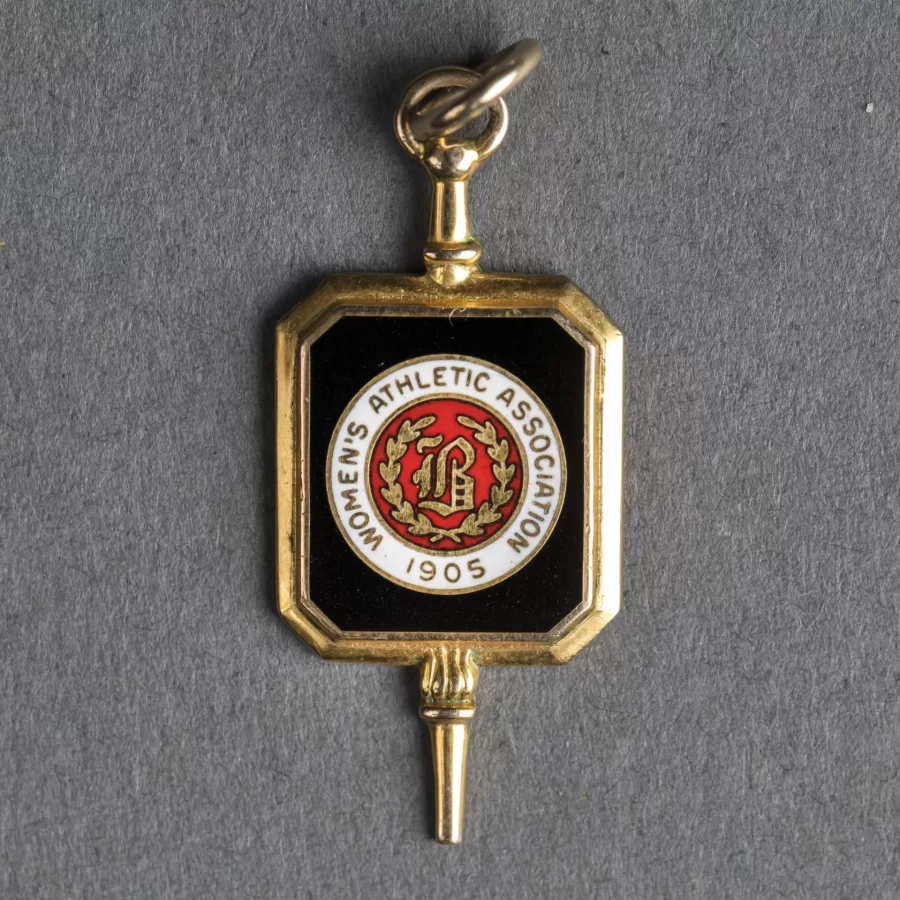
A popular game in the early 1900s, it went like this: Fast runners (the hares) ran ahead creating a trail with pieces of paper or other clues. The others, the hounds, tried to pick up the trail. The 1914 version went like this:
“The hares had been unusually diligent in making the trails as blind and misleading as possible, and the little paths of red, blue, yellow and white paper led over gates and railway embankments, thru swamps, fences, and thickets. It was nearly sunset before the Hares’ Retreat was reached, at a beautiful spot by the [Androscoggin River], where a brilliant camp fire was burning and a delicious lunch was served.”
Tennis and the relatively new American sport of field hockey were early offerings, too. The latter “involves much running and is both scientific and interesting when well-played,” noted The Bates Student.
Betrayed
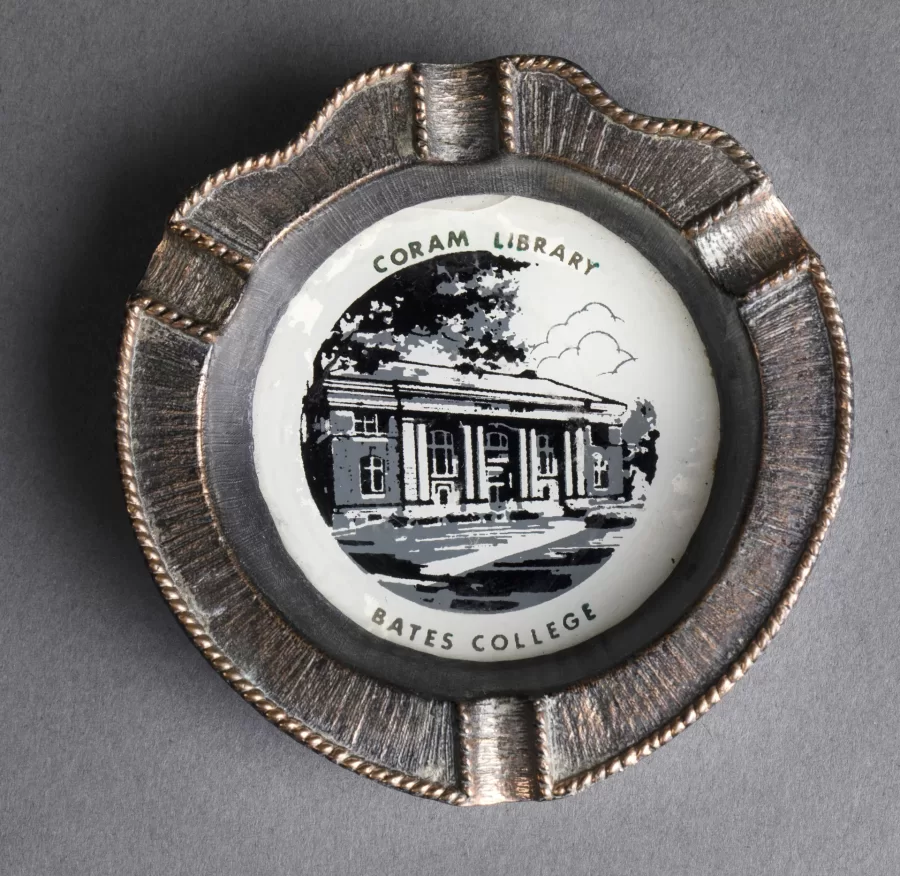
Ash trays aren’t seen much in homes anymore (or anywhere, for that matter). This one — with an image of Coram Library, and belonging to the late Melvin ’42 and Natalie Webber Gulbrandsen ’42 — is safely in the Archives.
It’s hard to believe the strength of the cigarette smoking culture through most of the 1900s. Here’s a 1930s ad in The Bates Student for Don Draper’s favorite brand, Lucky Strike:
